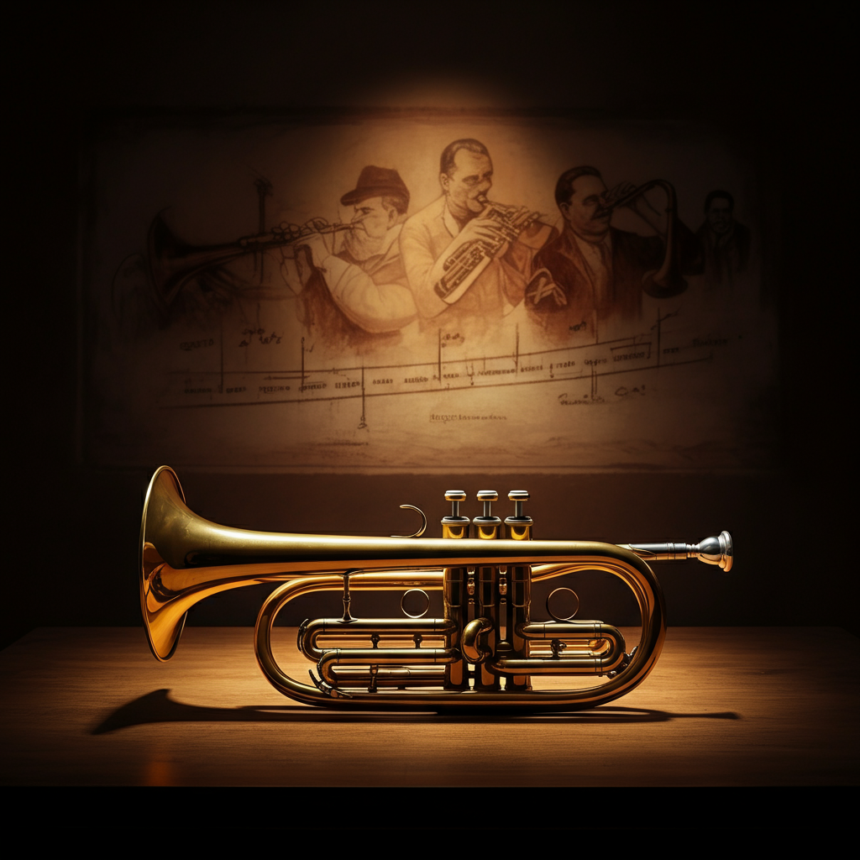What Is a Flugelhorn and Where Did It Originate?
The flugelhorn, often overshadowed by its shinier brass relatives like the trumpet or the cornet, carries a tone that’s both warm and mellow. But what exactly is this intriguing instrument, and where did it come from? The flugelhorn is a brass instrument known for its rich, velvety sound, often used in jazz ensembles, brass bands, and orchestras. Its name derives from the German word Flügel, meaning “wing” or “flank horn,” as it was initially used in the military for signaling.
While its roots trace back to the 18th century, the flugelhorn’s charm has endured over time, captivating musicians and audiences alike. If you’re ready to learn more about this versatile and soulful instrument, keep reading for an in-depth exploration of its history, features, and how you can make it part of your musical repertoire.
A Brief History of the Flugelhorn
The story of the flugelhorn begins in Germany and Austria, where it was first developed as a keyed bugle around 1750. Initially used for military purposes, the instrument’s distinct sound made it ideal for signaling across battlefields. By the early 19th century, Adolphe Sax, the inventor of the saxophone, helped improve the instrument by introducing valve technology, allowing for greater range and flexibility.
As music evolved, so did the flugel horn role. It transitioned from the battlefield to concert halls, finding a home in brass bands and eventually jazz ensembles. Today, the flugel horn remains a favorite for musicians seeking a soulful, melodic addition to their repertoire.
What Sets the Flugelhorn Apart?
At first glance, the flugelhorn might look like a trumpet or cornet, but it has distinguishing features that make it unique. Here’s how it stands out:
- Shape and Design
The flugelhorn features a wider, conical bore compared to the trumpet’s cylindrical bore. This design produces its signature warm, mellow tone. Its bell is also larger and more flared, contributing to its smooth sound.
- Tone
While a trumpet is bright and piercing, and a cornet is slightly softer, the flugel horn produces a deeper, warmer sound. This makes it perfect for ballads and lyrical pieces.
- Valve Configuration
Most flugelhorns have three standard piston valves, but some models include a fourth valve to extend the lower register, offering even greater versatility.
- Transitions
Due to its tonal quality, the flugelhorn is commonly used for transitioning between brass sections and woodwind arrangements, making it highly adaptable across genres.
How to Play the Flugelhorn
If you’re new to the flugelhorn or even brass instruments in general, don’t worry! While it has its challenges, mastering the flugel horn can be immensely rewarding. Here are some beginner-friendly tips:
- Posture and Embouchure
Maintain an upright posture for better airflow, and form a firm but relaxed embouchure (the way your lips and facial muscles interact with the mouthpiece). A rounded shape with consistent pressure works best.
- Breath Control
The flugelhorn, like all brass instruments, relies heavily on breath control. Practice deep abdominal breathing to produce a consistent, warm tone.
- Valve Technique
Get comfortable with pressing the valves smoothly and accurately. Start with basic scales to build dexterity and coordination.
- Practice Consistency
Commit to regular practice sessions. Short, daily practice is more effective than infrequent marathons.
Famous Flugelhorn Players You Should Know
The flugelhorn has attracted some of the most talented musicians in the world. Here are a few legends who brought this instrument to the forefront:
- Chuck Mangione
Known for his hit “Feels So Good,” Mangione elevated the flugel horn to mainstream popularity in jazz.
- Clark Terry
A jazz trumpet and flugelhorn virtuoso, Terry’s unique style and phrasing inspired countless musicians.
- Art Farmer
Renowned for his lyrical abilities, Farmer often used the flugel horn to craft emotionally resonant solos.
- Kenny Wheeler
An influential figure in modern jazz, Wheeler’s contributions to the flugel horn repertoire are celebrated worldwide.
Choosing the Right Flugelhorn for Your Needs
Whether you’re a beginner or an experienced player, finding the perfect flugel horn is essential. Here’s what to consider:
- Skill Level
-
- Beginner: Look for affordable, durable models like the Yamaha YFH-2310.
- Intermediate: Choose step-up models such as the Jupiter JFH-1100R for improved tone.
- Professional: Higher-end options like the Bach FH600 or Schilke HC1 are ideal for advanced players.
- Material and Finish
Common materials include brass and silver. Lacquered finishes produce a warmer sound, while silver-plated finishes offer a brighter tone.
- Valve Options
Beginners can stick to a standard three-valve flugel horn, but professionals may prefer a four-valve option for greater range.
- Budget
Basic models start around $500, while professional instruments can cost several thousand dollars. Set a budget and prioritize quality.
Caring for Your Flugelhorn
To keep your flugel horn in excellent condition, regular maintenance is essential. Follow these tips:
- Clean the Mouthpiece
After each use, clean the mouthpiece with warm water and a mild detergent to remove bacteria.
- Oil the Valves
Use a quality valve oil to keep them smooth and responsive. Apply sparingly to avoid build-up.
- Polish the Exterior
Regularly wipe down the flugel horn with a soft cloth to maintain its shine and remove fingerprints.
- Store Properly
Keep your flugel horn in a sturdy case to protect it from dents and scratches when not in use.
- Annual Check-Ups
Take your instrument to a professional technician for annual servicing to ensure optimal performance.
The Timeless Charm of the Flugelhorn
The flugel horn holds a special place in the world of music, offering versatility, warmth, and emotional depth. Whether you’re discovering its rich history, admiring its unique sound, or learning to play, the flugel horn is an instrument that deserves appreciation.
Thinking of picking one up or refining your technique? With expert guidance and quality equipment, you’ll unlock its full potential in no time. Start your flugel horn journey today and become part of a community that cherishes this soulful brass instrument.
FAQs
1. Is the flugelhorn harder to play than the trumpet?
Not necessarily. The techniques are similar, but the flugel horn requires better breath control for its mellow tone.
2. What genre of music is the flugelhorn used in?
It’s popular in jazz, classical, and brass band music, but it can fit beautifully into any genre.
3. How do I know if I need a four-valve flugelhorn?
If you frequently play pieces requiring a lower register, a four-valve flugel horn is worth considering.
4. What brands are best for flugelhorns?
Top brands include Yamaha, Bach, Schilke, and Jupiter.
5. Can kids learn the flugelhorn?
Yes! Its mellow sound and manageable size make it a great beginner brass instrument for children.





